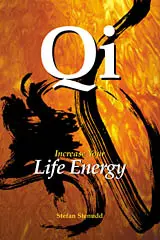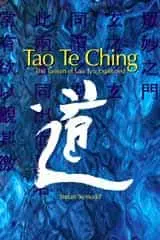Qi Extension Exercise 3

Push
The most amusing way of practicing pushing is by all the heavy doors we have to pass in everyday life – entrances to shops, elevators, apartment buildings, and so on. Any door with a spring to make it shut automatically is quite laborious to open. Passing through them, one after the other, can be turned into an excellent way of training the use of qi that I call pushing.
The Book
The life energy qi (also chi or ki) explained, with several very easy exercises to awaken, increase, and use it. Click the image to see the book at Amazon (paid link).
|
Here you use your qi flow to push doors open, but of course you can use the same method for any kind of pushing, whether it is an object, an animal, or a human being. Be careful, though, since your pushing might become more forceful than you expected.
How to do it
- Stand at about half an arm’s length from the obstacle you want to push. When you are learning this, choose an object that is easy to give a push. A normal door without that spring construction to get it shut is sufficient to start with. Don’t stand with your feet together, since that makes you unstable, but with one foot at least half a step in front of the other. Bend your knees slightly, which will also improve your balance.
- Don’t aim at the obstacle, but past it, in the direction you want to push it. This can be difficult if the object obstructs your view completely, like a door does. Still try to sort of look right through it, as if you had X-ray vision. In the beginning, the best is to exercise on a glass door, a garden gate, or some other obstacle that does not block your view.
- Put the palm of your hand on the obstacle – the right one if you are right-handed, or the left if you are left-handed, so that you feel comfortable with your ability to push the object in a normal way. When you are used to this exercise, you can choose any hand. The palm of your hand should have good contact with the object, but not push on it yet.
- Commence a powerful qi breathing from your lower abdomen. You should feel that the breathing and the qi flow work well, before you continue.
- Start a long exhalation through your nose. Look straight ahead – not at your hand, but way past it.
- With a continued exhalation, shove your hand forward, so that you push away the obstacle. Do not think about the obstacle, but focus on the direction right past it. It should feel like you breathe out through the hand in a long exhalation that reaches far beyond the obstacle. The hand should sort of sail on this exhalation. Do not hesitate to increase the force of your exhalation while you are doing the actual pushing.
- Make sure that you have pushed the obstacle away, before the feeling of exhaling weakens. It is important that you are finished with the pushing while your exhalation still feels strong.
- Once is never. Take a few deep breaths, and then repeat the exercise.
- Continue as long as you find it rewarding, but halt if you notice that you start to be sloppy with your breathing or your attitude in the pushing. As you have already understood, this exercise makes qi flow through your hand and give power to the pushing. Already at the first try you will find that your movement is more powerful than it would be without this method, and the obstacle is removed with greater ease than you expected. Be careful, because when you get good at this you can shove away quite heavy doors as if they were made of paper. You generate considerable power this way – much more than you originally estimated.
Pushing is just one example of how the qi flow can be used in just about anything you do. By using qi you get more power at your disposal. Even great exertions get much easier this way. The qi flow helps your muscles to work in unison and more efficiently, so you do get stronger than without this method – much stronger.
Also, there are lots of boring and tiresome tasks that become more fun and help you improve your way of working with your body. This joy in itself makes you feel better than you would if doing the same things without qi breathing. So, even at exertion you will have a greater amount of relaxation.
Go on and develop your own ways of getting things done with the help of qi breathing. Examine tasks that you often need to get done, and experiment with how you can use your qi flow in them. It can be used in most cases, although it sometimes takes clever thinking and adaptations to figure out the best way to go about it.
Qi Extension Exercises
Here is a set of simple exercises to extend your qi. Now, you'll start to really experience the use of it. I recommend you to follow the order given below, the first time around. Then you can safely make your own priorities.
© Stefan Stenudd
This is a chapter of my book Qi: Increase your Life energy.
My Books About Life Energy
Here are the two books I have written on the subject of life energy. This website contains some of the material from the first one.
Click the image to see the book at Amazon (paid link).

Qi — Increase Your Life Energy
The life energy qi (also chi or ki) explained, with several very easy exercises to awaken, increase, and use it.

Life Energy Encyclopedia
Qi, prana, spirit, ruach, pneuma, and many other life forces around the world explained and compared. Click the image to see the book at Amazon (paid link).
My Other Websites
The many life force beliefs all over the world, ancient and modern, explained.
Taoism, the old Chinese philosophy of life, based on
Tao, the Way. Also, the complete
Tao Te Ching translated and explained.
Aikido, the peaceful martial art. Its basics, principles, techniques, and more — in texts, images and videos.
The 64 hexagrams of the Chinese classic
I Ching and what they mean in divination. Free online reading.
Other Books by Me
Click the image to see the book at Amazon (paid link).

Tao Te Ching
The Taoism of Lao Tzu Explained
The great Chinese classic, translated to English and extensively commented.

Aikido Principles
Basic Concepts of the Peaceful Martial Art
Aikido principles, philosophy, and basic ideas.

Fake Lao Tzu Quotes
Erroneous Tao Te Ching Citations Examined. 90 of the most spread false Lao Tzu quotes, why they are false and where they are really from.
 About Me
About Me
I'm a Swedish author and aikido instructor. I've written several books about aikido, qi energy and other life force concepts. I'm also an historian of ideas, researching the thought patterns in creation myths.
Click the image to get to my personal website.


 Qi — Increase Your Life Energy
Qi — Increase Your Life Energy


